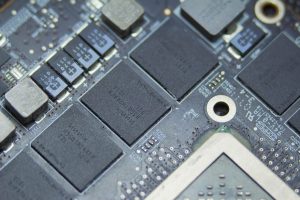In the world of modern automotive repair and diagnostics, few things are as crucial as the ABS (Anti-lock Braking System). Whether you’re a professional mechanic or a DIY enthusiast, understanding how to maintain and troubleshoot the ABS system is paramount. One of the more complex but essential tasks is ABS bleeding, and in this article, I’ll explore the role of bidirectional scanners in simplifying and enhancing this process.
By the end of this piece, you’ll not only understand what ABS bleeding is, but you’ll also learn how a bidirectional scanner can dramatically improve efficiency, accuracy, and effectiveness when working on your car’s braking system.
What is ABS Bleeding?
The Basics of ABS and Its Function
The Anti-lock Braking System (ABS) is a critical safety feature in most modern vehicles. It prevents the wheels from locking up during braking, helping maintain traction and allowing the driver to steer, even in slippery conditions. By rapidly modulating brake pressure, ABS helps avoid skidding, especially in wet or icy conditions.
However, for the ABS system to function optimally, it needs to be free of air within the brake lines. Air in the brake fluid can cause inconsistent brake performance, which is why ABS bleeding is so important.
You also may like to read this: What is Application in Zillexit Software: Unveiling the Key Features and Uses
What Does ABS Bleeding Mean?
ABS bleeding refers to the process of removing trapped air or contaminants from the brake lines. When the brake fluid in your vehicle’s ABS system becomes contaminated or air gets trapped in the lines, the braking power is significantly reduced, and the system can fail to operate correctly.
Typically, ABS bleeding is done after brake repairs, fluid changes, or when air is suspected in the system. During this process, it is critical to ensure that the brake lines are free of any air pockets that might compromise brake performance.
What is a Bidirectional Scanner?
The Function of a Bidirectional Scanner
A bidirectional scanner is an advanced diagnostic tool used in automotive repair to communicate with your vehicle’s electronic systems. Unlike standard OBD-II scanners, which only read data and clear codes, bidirectional scanners allow you to both read and send commands to various systems in your car, including the ABS system.
Why Is It Called Bidirectional?
The term bidirectional refers to the scanner’s ability to both send and receive information. It acts as a communication link between the vehicle’s onboard computer and the diagnostic tool, allowing for more advanced functions like activating ABS components, testing sensors, and performing specific tasks such as ABS bleeding.
How Does a Bidirectional Scanner Help in ABS Bleeding?
Automating the ABS Bleeding Process
When you perform ABS bleeding, you’re essentially purging air from the brake system by forcing fluid through the brake lines. This is done by activating the ABS pump and manipulating ABS valves to ensure that the air is fully evacuated.
In the past, mechanics would need to manually pump the brake pedal or rely on specialized tools to activate the ABS pump and valves. However, with a bidirectional scanner, much of this can be automated, reducing the complexity of the process.
Key Functions of a Bidirectional Scanner in ABS Bleeding
- ABS Pump Activation: The scanner can activate the ABS pump, running it during the bleeding process to ensure that brake fluid circulates through the system.
- Control of ABS Valves: The scanner allows you to open and close the ABS valves precisely, directing fluid to specific areas of the brake system and ensuring air is removed from the lines.
- Monitoring and Diagnostics: A bidirectional scanner provides real-time data from the ABS system, such as fluid pressure, temperature, and diagnostic trouble codes (DTCs). This helps you ensure that the system is functioning properly.
- Speed and Efficiency: By automating the process, a bidirectional scanner can significantly reduce the time required for ABS bleeding, making it a more efficient process.
Pros and Cons of Using a Bidirectional Scanner for ABS Bleeding
Pros
- Efficiency: Bidirectional scanners automate critical tasks like valve activation, pump activation, and diagnostics, making the entire ABS bleeding process faster and less labor-intensive.
- Accuracy: With precise control over the ABS system, a bidirectional scanner ensures that air is fully purged from the brake lines, improving the overall performance of the braking system.
- Real-Time Data: The scanner provides real-time diagnostics, including ABS-related trouble codes and system pressures, which helps ensure that the ABS system is operating optimally.
- Versatility: Many modern bidirectional scanners are compatible with a wide range of vehicle makes and models, making them a valuable tool for automotive professionals.
Cons
- Cost: Bidirectional scanners tend to be more expensive than traditional OBD-II scanners, which may be a barrier for DIY enthusiasts or small repair shops.
- Learning Curve: With advanced features comes complexity. Some users may find it challenging to navigate the full functionality of a bidirectional scanner, especially without proper training.
- Over-Reliance on Technology: While scanners are powerful, there is still a need for a solid understanding of vehicle systems and diagnostic troubleshooting. Relying too heavily on the scanner could lead to missed diagnoses.
Tech Specs and Recommendations for ABS Bleeding
Key Features to Look for in a Bidirectional Scanner
- ABS System Support: Ensure the scanner supports ABS functions, including pump activation, valve control, and sensor diagnostics.
- Vehicle Compatibility: Check that the scanner is compatible with the make and model of your vehicle. Some scanners are more versatile and support a wider range of vehicles than others.
- User Interface: Choose a scanner with a user-friendly interface, clear instructions, and easy navigation to avoid frustration during repairs.
- Updateable Software: Opt for scanners with upgradable software to ensure ongoing support for new vehicle models and systems.
Recommended Models
- Autel MaxiCOM MK808: This scanner offers comprehensive ABS and brake system support and is known for its ease of use and affordability.
- Launch X431 V+: A professional-grade scanner with advanced features for ABS bleeding, including valve control and pump activation, ideal for technicians.
- Foxwell NT510 Elite: Known for its robust ABS diagnostics and wide vehicle compatibility, the NT510 Elite is a great option for both professionals and enthusiasts.
Comparison Table: Features of Bidirectional Scanners vs. Traditional Methods
| Feature | Bidirectional Scanner | Traditional Method |
| ABS Pump Activation | Automatic via scanner control | Manual or by using a specialized tool |
| Valve Control | Precise, automated valve control | Requires manual intervention or pedal pumping |
| Real-Time Diagnostics | Available for ABS, pressure, temperature, and DTCs | None |
| Ease of Use | User-friendly interface with clear instructions | Requires technical know-how and experience |
| Time Efficiency | Significantly faster than manual methods | Time-consuming, especially on modern vehicles |
Frequently Asked Questions (FAQ)
- What is ABS bleeding? ABS bleeding is the process of removing air from the brake lines in the ABS system to ensure proper brake function.
- How does a bidirectional scanner help with ABS bleeding? A bidirectional scanner automates tasks like activating the ABS pump and controlling valves, making the ABS bleeding process more efficient and accurate.
- Can ABS bleeding be done manually? Yes, but it requires manual pedal pumping or specialized tools. A bidirectional scanner automates these steps for faster and more accurate results.
- Is a bidirectional scanner compatible with all vehicles? Most bidirectional scanners are compatible with a wide range of vehicles, but it’s important to check vehicle compatibility before purchasing.
- How does a bidirectional scanner work? The scanner communicates with the vehicle’s electronic systems to both read data and send commands, such as activating ABS components.
- Are bidirectional scanners expensive? Yes, they tend to be pricier than standard OBD-II scanners, but their functionality justifies the cost for professional use.
- What other systems can a bidirectional scanner diagnose? In addition to ABS, these scanners can diagnose and activate a variety of systems, including airbags (SRS), engine, transmission, and more.
- Do I need a professional mechanic to use a bidirectional scanner? While these tools are professional-grade, they are designed to be user-friendly. Some basic knowledge of vehicle systems is helpful, but training may be required for advanced features.
- What are the signs that ABS bleeding is needed? Inconsistent braking, a spongy brake pedal, or ABS warning lights can indicate the need for ABS bleeding.
- Can a bidirectional scanner help clear ABS error codes? Yes, most bidirectional scanners can read and clear ABS-related diagnostic trouble codes (DTCs).
















